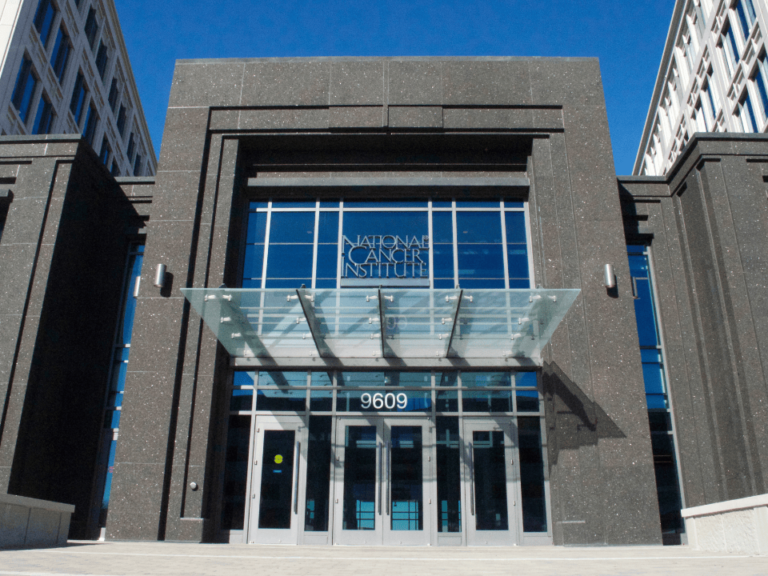Almost one decade ago, Laurie Fenton-Ambrose, president and CEO of the Lung Cancer Alliance, described the National Lung Screening Trial as “failed” and “outdated.”
At that time, LCA spearheaded an effort to launch a congressional probe of the NLST investigators.
These days, Fenton-Ambrose refers to NLST as “indisputable” and has requested a National Coverage Determination seeking Medicare coverage for lung cancer screening based on the trial’s results.
The Centers for Medicare & Medicaid Services’ Medicare Evidence Development & Coverage Advisory Committee will hold a hearing on the NCD April 30.
“We base this request for coverage on the indisputable scientific evidence brought forward through the NLST and in anticipation of the release of final favorable recommendations by the United States Preventive Services Task Force, which we hope is completed by the end of this year,” Fenton-Ambrose said in LCA’s letter to CMS.
This is dramatically different from what Fenton-Ambrose said eight years ago.
“They [NCI] are so wedded to a failed trial that they can’t grasp that the technology they are looking at is outdated,” Ambrose said at the time (The Cancer Letter, Nov. 3, 2006). “The fact that the result will literally underestimate the benefits of screening ought to be of concern to them. What’s going to happen after $220 million, with another four more years before we learn the results, we are going to learn that really screening doesn’t help. Why?
“Because they’ve used technology that is outdated. It will underestimate the value of screening, and they know that.”
At the time, LCA’s allegations of conflicts of interest led to an inquiry by Reps. John Dingell (D-Mich.) and Bart Stupak (D-Mich.) into the investigators involved in the NLST. Dingell was chairman of the House Committee on Energy and Commerce, and Stupak headed its Subcommittee on Oversight and Investigations (The Cancer Letter, June 13, 2008).
The investigation was launched with considerable breast-beating on the part of legislators, but it petered out without notice.
LCA officials didn’t explain their change of heart, saying instead that the NLST should have been done better. Fenton-Ambrose did not personally respond to questions from The Cancer Letter.
“Had the NLST included a uniform protocol for management and follow up as part of its design; had there been more than three rounds of screening; and had the technology been more updated, the mortality benefit would have been even greater,” LCA spokesperson Kay Cofrancesco said to The Cancer Letter April 9.


Aberle: LCA Endorsement is “Appropriate”
LCA has been an outspoken proponent of screening. The group endorsed lung cancer screening prior to the emergence of evidence of mortality benefit through randomized trials, said Denise Aberle, national co-principal investigator of the NLST, vice chair of research in the Department of Radiological Science, and professor in the Department of Bioengineering at the University of California, Los Angeles.
“The NLST data were dominant influences on the recommendation of the USPSTF to provide a Grade B recommendation; it is appropriate that the LCA would recommend CMS coverage of screening based on the NLST data,” Aberle said to The Cancer Letter.
“Several criticisms have been leveled against the NLST. While no trial is without weaknesses, the vast majority of the lung cancer community has praised the NLST for its methodological rigor, quality of data collection and reporting, standardization of image acquisition and interpretation, statistical analyses, and open access to its data to the entire scientific community.
“It should be understood that guidelines for managing positive screens were created trial-wide, but sites were allowed to manage participants according to local practices.”
Aberle was one of the NLST researchers targeted in the congressional investigation.
“Even without strict protocol guidelines, the management of positive screens was fairly consistent across sites: clinical and imaging follow-up were most common, and the number of follow-up scans for positive screens (roughly one) were modest and appropriate relative to what we know now,” Aberle said. “The imaging technology platforms evolved as the trial progressed, and ultimately included acquisition parameters currently being promulgated in the imaging community.
“One expects and hopes to see advances in imaging technology over time. Whether fixed management guidelines or the exclusive use of current technological platforms would have altered outcomes is dubious.”
While the NLST was accruing patients, LCA was advocating an immediate change of healthcare policy to include computed tomography screening of current and former smokers. The proposed change was to be based on the findings of a single-arm study conducted by the International Early Lung Cancer Screening Program, a group of researchers based at Weill Cornell Medical College.
In a paper in the Oct. 26, 2006, issue of the New England Journal of Medicine, I-ELCAP claimed that their screening regimen could prevent 80 percent of deaths from lung cancer.
Skeptics said that screening could find a lot of clinically irrelevant disease and lead to overtreatment, and a randomized trial powered to detect mortality, as opposed to survival, was needed to resolve the question.
Soon thereafter, The Cancer Letter reported that the I-ELCAP leaders, who promoted screening and opposed NLST, had failed to make disclosure of intellectual property rights and commercial ties manufacturers of screening equipment, as well as having received research funding from a tobacco company (The Cancer Letter, Jan. 18, 2008).
Medical journals, including the New England Journal of Medicine, the Journal of American Medical Association, Cancer, Cytopathology, The Oncologist, and Nature Clinical Practice Oncology, published corrections, clarifications and editorials stemming from these conflicts.
The assertion that the NLST was relying on outdated technologies was “seriously misinformed,” Aberle said at the time (The Cancer Letter, Nov. 3, 2006).
“Frankly, if anything, the NLST has defined imaging standards for clinical trials,” Aberle said. “I don’t get the motivation behind trying to vilify the NLST. It’s one of the most thoughtfully constructed and closely monitored trials ever. The lung cancer community needs to get behind a unified message that more research dollars must go into all areas of lung cancer—prevention, early detection, effective therapies, and response assessment. And we need the correct answers to these.”
Now that the trial is concluded and widely endorsed in the lung cancer community, Aberle said recently the greater concern is whether these results can be replicated across community practices.
“The NLST was conducted at largely academic centers with subspecialty expertise,” Aberle said to The Cancer Letter. “The medical community and its various organizations will need to collectively establish the criteria for screening centers, including definitions of screen-eligible individuals, scanning parameters and interpretation guidelines, management guidelines, quality assurance, concomitant smoking cessation programs, and minimum data collection to allow us to continuously revise screening paradigms moving forward based on evidence collected in the natural laboratory of clinical practice.”












